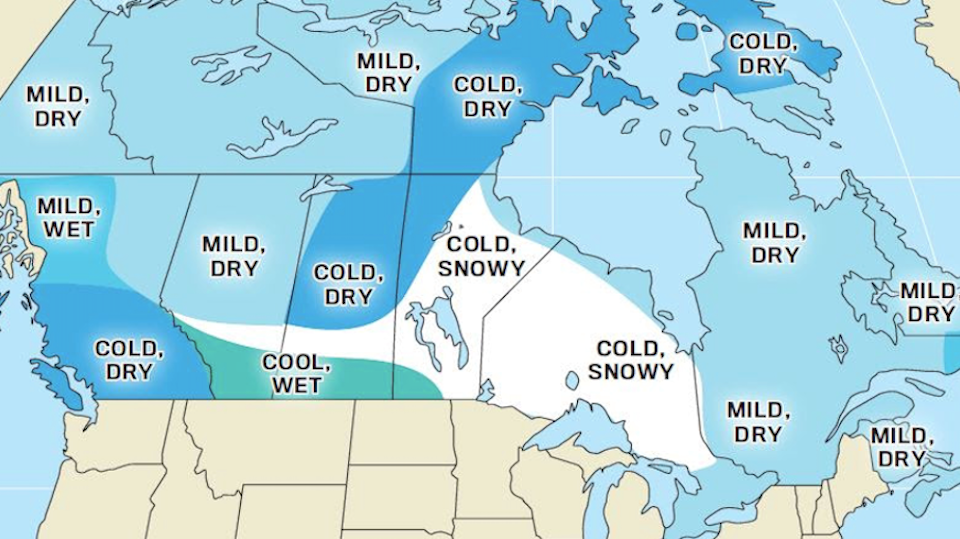Metro Vancouverites should brace for a slightly colder winter...but they likely won't face a deep freeze.
The Old Farmer's Almanac has released its 2024/2025 winter weather forecast for Canada, including individual outlooks for each province. It calls for most regions to experience "temperate" conditions, although Ontario and eastern Manitoba are expected to see significant snowfall.
However, British Columbia isn't expected to escape the grasp of Mother Nature's frosty season. The forecast includes below-average temperatures for the B.C. coast, "with the coldest periods in early December and early and mid-January."
While B.C. might experience some cold weather, it isn't expected to see substantial snow. The Almanac's forecasters expect the southern portion of the province will receive below-average precipitation and "lighter than expected" snowfall.
The snowiest periods in southern B.C. are expected to occur in "late November, early December, early January, early to mid-February, and early March."
In contrast, northern B.C. is expected to have a milder winter with above-average precipitation and snow. The Alamanc's seasonal map shows a stark divide between the middle of the province, with the southern portion experiencing colder but drier weather.
Metro Vancouver weather forecast
Environment Canada meteorologist Brian Proctor says La Niña typically causes colder and wetter winters in Metro Vancouver. However, the department currently expects a "weak" La Niña year.
"We were thinking that La Niña would be stronger, which could have meant an early start to fall," he told V.I.A.
Instead, the national weather forecaster expects true fall storms will commence around mid-October, which is typical for the season. Temperatures may also trend slightly above average through the fall, partially due to warm weather through the first half of September.
La Niña's effects won't officially take shape in the Lower Mainland until mid to late December when the weather phenomenon can produce colder-than-average conditions and champagne powder on the ski hills.
The Weather Network also expects most of Canada will see warmer-than-normal or near-normal temperatures in September but hasn't commented yet on a winter forecast.
Stay up-to-date with hyperlocal forecasts across 50 neighbourhoods in the Lower Mainland with V.I.A.'s Weatherhood.



